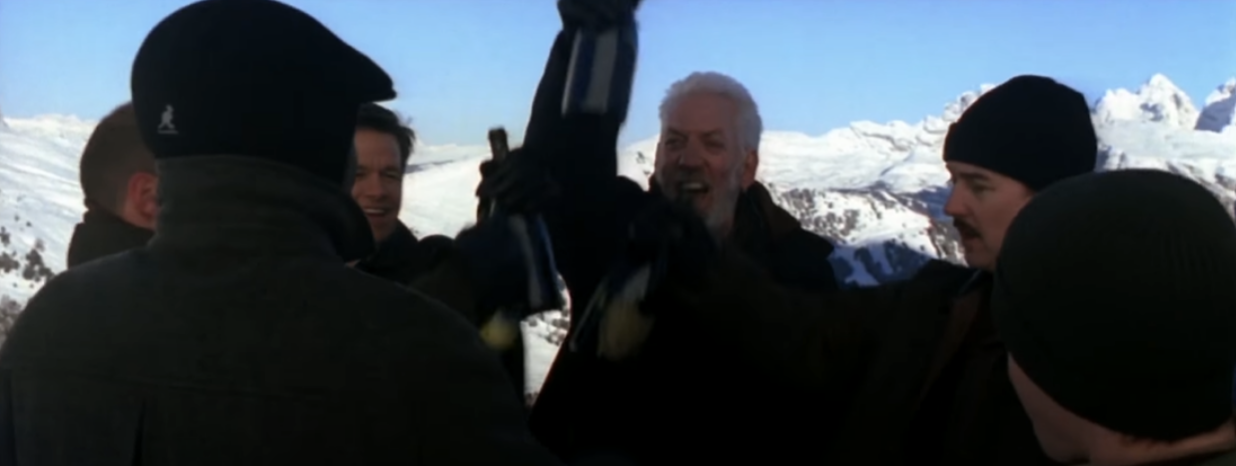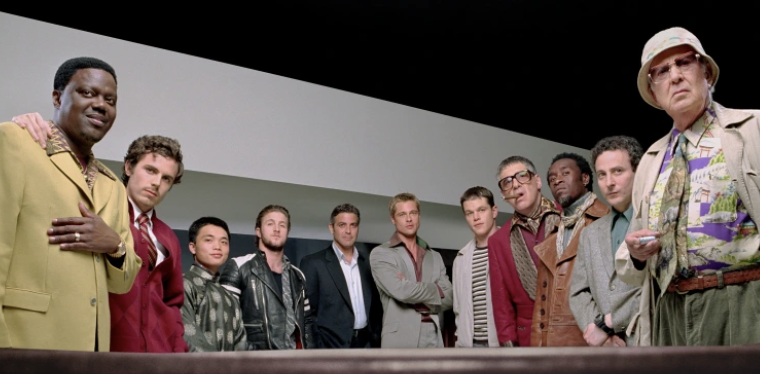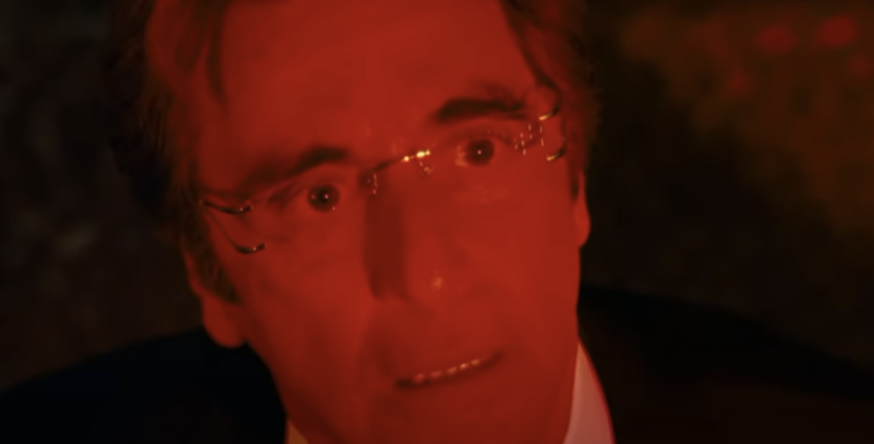The Magic of the Heist Movie
Warning: Contains spoilers.
Heist movies: What about them is so heart-poundingly compelling? Is it an unlikely, rag-tag team that despite constant bickering and tomfoolery, can pull off show-stopping scenes with precise execution? Is it the endless maze of obstacles, walls, and locks protecting the item of interest from theft? Is it the glitz and glamour, the mind-spinning layers of illusions and charades that make pulling off a heist so satisfying? Or is it even the gritty dark certainty with which a team does the job? Heist movies have left audiences breathless and hypnotized for decades, but what about them continues to pull viewers in?
Heist movies have been around since the 1930s, but they rose to prominence in the 1950s, when big-ticket films like The Asphalt Jungle by director John Huston blew through theatres. Initially, The Motion Picture Production Code—the Hays Code, a set of industry guidelines existing between 1934 to 1968 - placed serious limits on what a heist movie could offer. It stated that “no picture should lower the moral standards of those who see it,” including “when the sympathy of the audience is thrown on the side of crime, wrong-doing, evil, sin,” (Hays Code, 1934). Heist movies thus often portrayed the heist failing, because (as many of us might understand) the complex dynamics of the characters made it too easy to root for them, even when they were breaking the law. Post-Hays Code, heists in movies were more likely to show success.
A heist movie at its core is about theft, about someone or some group attempting to steal an object of interest from a place or person that keeps it under (at a bare minimum) lock and key. There is a slight difference between a heist and its more light-hearted sister, the caper film. Where heist movies tend to be more serious and even gritty, capers tend to involve more humour. Think Triple Frontier (2019) versus Catch Me If You Can (2002).
So how do these movies put us on the edge of our seats, unable to look away?
Purpose of the Heist
Why pull a job in the first place? The heist movie usually begins with a motive, setting the tone for the film and makes the heist meaningful. Motives don’t always have to be serious, but they are often personal. In The Killing (1956), protagonist Johnny Clay decides to steal about $2 million dollars from a racetrack after getting out of prison. He decides that his payoff had better be worth the punishment of committing crimes, a motive that tells us more about his character.
A common motive is revenge. Take The Italian Job (2003). Betrayed by his former team member, Charlie Croker swears revenge, especially when the betrayal involves the murder of one of his other team members. Cool- or hot-headed fury are channeled by the leader into a crime that makes payback fiscally painful.
The Italian Job (2018)
The motive drives the plot forward, reminding the characters why they do the job in the first place, especially when law enforcement closes in and success is uncertain.
Getting the Team Together
While heists can be done solo, many heist movies often use a team and this part of the film, while not quite as high-stakes as the rest, is underrated. Team chemistry is one of the biggest components of what makes these films so attractive. One by one, each member is revealed, with their unique skills that bring the leader one step closer to making the heist work.
Common tropes include the mastermind (often the leader) who plans the heist; a conman who can charm and distract people in the way; a driver (which Baby Driver (2019) put in the spotlight); a safe-cracker; someone well-versed in procuring and building supplies;the acrobat capable of getting into a location physically; a hacker who can say, “I’m in!”
Getting everyone on-board isn’t always easy, and some need to be convinced, but eventually we see why everyone is essential. A favourite film of mine that does this particularly well is Ocean’s 11 (2001), when every member’s talents are highlighted before they’re recruited, showing just how capable they are. We also see how team members’ personalities will complement or even bring friction to the team, adding to the formulation of team chemistry. The characters, especially if they are well-developed with their own motives, personalities, and backstories, make us want to root for them even more.
Ocean’s 11 (2001)
Planning the Heist
The team is set, the target is decided…but how to steal it? Planning the heist is where the audience truly sees the near-impossibility of the take and the obstacles in the way. The target is usually sealed behind multiple layers of security made to incapacitate, maim, or even kill anyone foolish enough to try to steal it. Classic examples include security cameras, passcodes, and vaults, but some heist movies take it one step further. Mission: Impossible—Rogue Nation (2015) involves protagonist Ethan Hunt breaking into a vault that is literally underwater, an additional level of security that makes the physical act of breaking in even harder.
Inception (2010) also involves a particularly complicated plan. Because of the type of target the team is working with—the information stowed in people’s dreams—a carefully articulated plan is not only crucial to success, but to returning to reality. The mind-twisting blurring between dreams and reality and the danger of being trapped in limbo forever forces the team to craft a three-layered dream, ensuring that they can pull each other out after planting an idea in their target’s subconscious (inception).
The plan is a foundation for understanding how the rest of the movie plays (or at least, is supposed to play) out.
Execution
Often in the climax, or the fast-paced build up to the climax, we see the team move the plan into action: swindling, threatening, and leaping their way to the steal. Illusions and charm, and grace and force run amok as every member of the team taps into their ability and laser-focus to make the plan succeed.
The plan is either executed to perfection and the team comes away with their prize or, occasionally, we see the team scramble to adapt to a wrench in their plans. The leader and the rest of the team have to improvise to get what they want in response to an unexpected security system, a new player in the game throwing them off-balance, or even the failure of one of their own team members. It’s where team chemistry really finds its flow and the stakes get raised (somehow) even higher than they are already.
One of the most exciting aspects of these parts are the feats performed under duress (such as Hunt breaking into a vault while holding his breath):
Mission Impossible: Rogue Nation (2015)
The thrilling aspect of a heist movie is not necessarily whether the heist is successful or not, but how the team pulls it off. How do they adapt to new obstacles thrown in their way, or execute parts of the plan in reality? While we may not always look for lessons in crime movies, heist movies teach us that even the best plans can fail. There are far too many variables out of our control, and events that we will never see coming, but these are completely normal. It is those who are able to accept risk and uncertainty and adapt to it that are truly successful.
Endings
When all is said and done, the heist either works, or it doesn’t. When things don’t go according to plan, there can be a twist that even we as the audience didn’t see coming. In Ocean’s 8 (2018), it’s when Anne Hathaway’s character knew about the heist all along. The team has to deal with the aftermath of the heist, get out safely, and end up alive.
This is the resolution to the suspense and the build-up: the sigh knowing that yes, they’ve done it. It’s the moment when we can catch our breath and revel in the timing and execution of the plan, take in the explosions and steely violence, or sit in awe at the dazzling glamour of the take. It’s when we see the characters we are made to sympathize with getting what they’ve wanted all along.
Sometimes, however, they consider whether the heist was worth it in the end. In The Town (2010), Ben Affleck’s character has to contemplate whether his life of crime is truly what he wants, especially when his love interest makes him think about other possibilities.
Ocean’s 8 (2018)
Other times, its revenge being completed and the satisfaction of seeing the enemy despair at the loss of their item (like Al Pacino’s expression in Ocean’s 13):
Ocean’s 13 (2007)
All he can say, out of shock is: “My diamonds.”
Ultimately, there are many layers of twists and turns, clashing wills and odds, and personal development in heist movies, which is exactly what to love about them. The idea of a team of underdogs, no matter how capable they are, going up against impossible odds draws us in, makes us have to know how they do it.
It’s the ambition, the risk, and the action that pulls us in, but it’s the stubborn drive pushing a team through that makes us stay. It’s doubling down in the face of danger—not to mention visually-appealing aesthetics, sequences, and soundtracks—that make heist movies so stunning, and an ever-enduring part of cinema.
Header: Sarah Kaye






